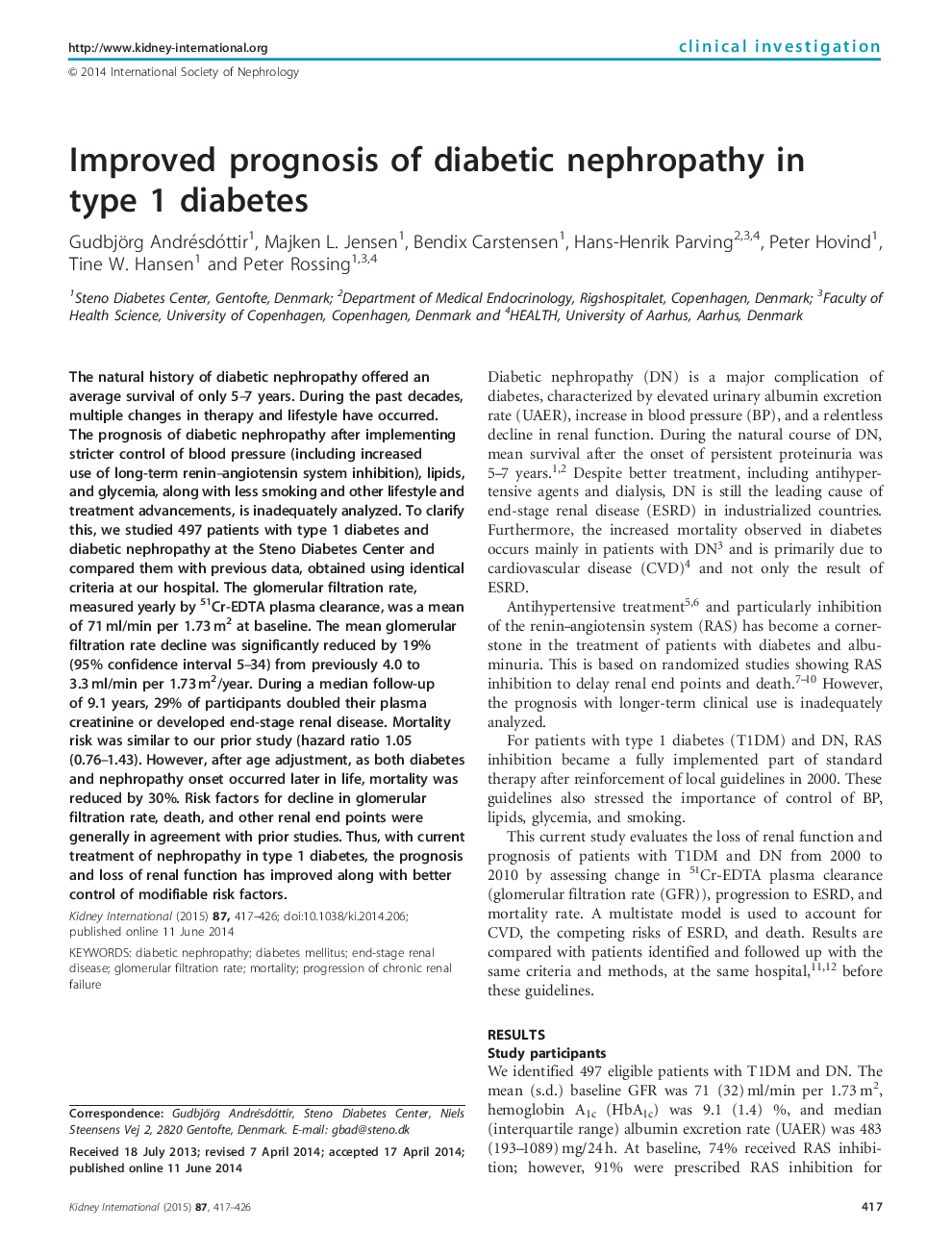| Article ID | Journal | Published Year | Pages | File Type |
|---|---|---|---|---|
| 6162259 | Kidney International | 2015 | 10 Pages |
Abstract
The natural history of diabetic nephropathy offered an average survival of only 5-7 years. During the past decades, multiple changes in therapy and lifestyle have occurred. The prognosis of diabetic nephropathy after implementing stricter control of blood pressure (including increased use of long-term renin-angiotensin system inhibition), lipids, and glycemia, along with less smoking and other lifestyle and treatment advancements, is inadequately analyzed. To clarify this, we studied 497 patients with type 1 diabetes and diabetic nephropathy at the Steno Diabetes Center and compared them with previous data, obtained using identical criteria at our hospital. The glomerular filtration rate, measured yearly by 51Cr-EDTA plasma clearance, was a mean of 71Â ml/min per 1.73Â m2 at baseline. The mean glomerular filtration rate decline was significantly reduced by 19% (95% confidence interval 5-34) from previously 4.0 to 3.3Â ml/min per 1.73Â m2/year. During a median follow-up of 9.1 years, 29% of participants doubled their plasma creatinine or developed end-stage renal disease. Mortality risk was similar to our prior study (hazard ratio 1.05 (0.76-1.43). However, after age adjustment, as both diabetes and nephropathy onset occurred later in life, mortality was reduced by 30%. Risk factors for decline in glomerular filtration rate, death, and other renal end points were generally in agreement with prior studies. Thus, with current treatment of nephropathy in type 1 diabetes, the prognosis and loss of renal function has improved along with better control of modifiable risk factors.
Keywords
Related Topics
Health Sciences
Medicine and Dentistry
Nephrology
Authors
Gudbjörg Andrésdóttir, Majken L. Jensen, Bendix Carstensen, Hans-Henrik Parving, Peter Hovind, Tine W. Hansen, Peter Rossing,
